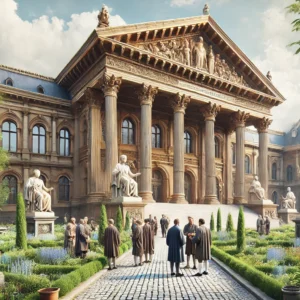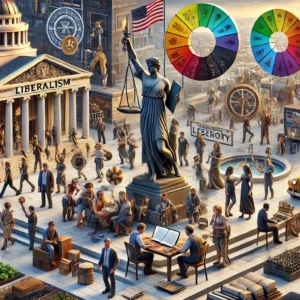Today, we are going to explore how the way we classify different types of governments has evolved over time. We’ll start with Aristotle’s classical typologies and move on to modern systems, focusing on the ‘three worlds’ typology that became popular during the Cold War. This journey will help us understand how political thought, global power dynamics, and socio-economic developments have shaped the way we categorize political regimes.
Let’s dive in!
Classical Political Classifications
Aristotle’s Six Forms of Government
Aristotle, a famous Greek philosopher, identified six forms of government in his work “Politics.” He classified them based on who rules and whose interests they serve. Here they are:
Monarchy: Rule by one person (a king or queen) in the interest of all.
Aristocracy: Rule by a few virtuous people in the interest of all.
Polity: Rule by many (usually the middle class) in the interest of all.
Tyranny: Rule by one person in the interest of the ruler.
Oligarchy: Rule by a few wealthy individuals in their own interest.
Democracy: Rule by many in the interest of the rulers (often leading to mob rule).
Comparative Chart: Aristotle’s Six Forms of Government
| Form of Government | Leadership | Objective | Virtue/Vice |
| Monarchy | One ruler | Welfare for all | Virtue: wisdom and farmers |
| Aristocracy | Few Virtuous individuals | Welfare for all | Virtue: Moral and intellectual excellence |
| Polity | Many Citizens (middle class) | Common good | Virtue: Sense of duty and justice |
| Tyranny | One ruler | Self-interest of the ruler | Vice: Exploitation and oppression |
| Oligarchy | Few Wealthy individuals | Self-interest of the rulers | Vice: Wealth and power over welfare |
| Democracy | Many (majority, often poor) | Self-interest of the rulers | Vice: Decisions based on immediate desires |
Aristotle’s Six Forms of Government: A Comprehensive Analysis
Quote from Aristotle: “The middle class is the best suited to rule, for they are neither rich nor poor, and thus maintain a stable and just governance.”
Why Polity Over Democracy?
Aristotle preferred polity over democracy because polity represents balanced and just governance by the middle class, while democracy can lead to rule by the poor majority, which might result in decisions based on short-term self-interests rather than the common good.
Modern Political Classifications
The ‘Three Worlds’ Typology
During the Cold War, a new way of classifying countries emerged, known as the ‘three worlds’ typology. This system divided the world into three groups based on economic and ideological differences.
The Three Worlds Explained
First World: Capitalist, industrialized countries like the United States, Canada, Western Europe, Japan, Australia, and New Zealand.
Second World: Communist states such as the Soviet Union, Eastern Europe, China, Cuba, and North Korea.
Third World: Developing countries in Africa, Asia, and Latin America, often economically dependent and less industrialized.
Quote about Democracy: “Democracy is the path to development, fostering innovation and progress through collective effort.”
Economic and Ideological Dimensions
First World:
Economy: Capitalist principles (private enterprise, free markets).
Ideology: Liberal-democratic politics (competitive elections, civil liberties, political pluralism).
Economic Data: In 1983, these countries generated 63% of the world’s GDP with only 15% of the world’s population.
Second World:
Economy: Centralized planning, collective endeavor, social equality.
Ideology: One-party communist states (limited political freedoms, state-controlled economies).
Economic Data: Produced 19% of the world’s GDP with 33% of the world’s population in 1983.
Third World:
- Economy: Often economically dependent, widespread poverty, lower levels of industrialization.
- Ideology: Typically authoritarian (military dictators, traditional monarchs).
- Economic Data: Produced 18% of the world’s GDP while accounting for 52% of the world’s population.
- Comparative Chart: The Three Worlds Typology
World Example Countries Economic System Political System GDP (1983) Population (1983) First World USA, Canada, Western Europe, Japan Capitalist Liberal-democratic 63% of global GDP 15% of global population Second World Soviet Union, Eastern Europe, China Communist One-party communist state 19% of global GDP 33% of global population Third World Africa, Asia, Latin America Developing economies Authoritarian 18% of global GDP 52% of global population Changes and Criticisms of the ‘Three Worlds’ Typology
Economic Developments
By the late 20th century, the ‘three worlds’ classification faced significant challenges due to economic growth in some developing countries, such as the ‘Asian Tigers’ (South Korea, Taiwan, Hong Kong, and Singapore). These nations achieved rapid industrialization and economic growth, challenging the notion that third-world countries were economically stagnant.
Example: South Korea, once considered a third-world country, has become one of the world’s leading economies.
Democratization
The spread of democratic governance in Asia, Latin America, and Africa during the 1980s and 1990s further complicated the ‘three worlds’ typology. Many third-world countries transitioned to democratic regimes, adopting multiparty elections and liberal political reforms.
Quote from Samuel P. Huntington: “The third wave of democratization indicated a global shift towards democratic governance.”
Collapse of Communism
The collapse of communism in Eastern Europe and the Soviet Union between 1989 and 1991 dealt a significant blow to the ‘three worlds’ model. These revolutions led to the adoption of market-based economic reforms and democratic political systems.
Symbolic Event: The fall of the Berlin Wall in 1989 marked the end of the ideological divide of the Cold War era.
Francis Fukuyama’s ‘End of History’
In his influential essay “The End of History?” published in 1989, political scientist Francis Fukuyama argued that the collapse of communism signaled the triumph of Western liberal democracy. According to Fukuyama, ideological debates had effectively ended, with liberal democracy emerging as the ultimate form of human government.
Quote from Fukuyama: “The end of history is characterized by the universalization of Western liberal democracy as the final form of human government.”
Conclusion
The ‘three worlds’ classification system provided a useful framework for understanding global political dynamics during the Cold War. However, economic developments, democratization, and the collapse of communism have rendered this typology increasingly obsolete. As the world moves towards greater political and economic complexity, new models of classification are needed to reflect contemporary realities.
The evolution from classical to modern political classifications highlights the dynamic nature of political analysis and the ongoing quest to understand the diverse forms of governance that shape our world. Whether we are looking at Aristotle’s typologies or the ‘three worlds’ model, the study of political classifications remains crucial in our efforts to comprehend global political systems.




